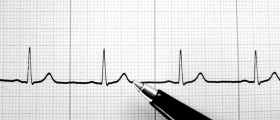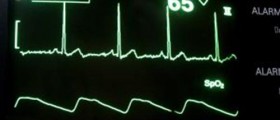
Types of Heart Rate
The maximum heart rate (MHR) sets a limit on the amount of times a heart can beat each minute. This differs from the resting heart rate (RHR) and the working heart rate (WHR). RHR denotes the amount of times the heart beats per minute while you are resting. Normally this is best measured in the morning, just after waking, when you are most relaxed. WHR refers to heart rate per minute just after or during exercise. The WHR is a good indicator of the strength and overall health of the heart.
Another type of heart rate is the recovery heart rate. This is usually used to evaluate one’s fitness level. To measure this, your WHR is noted, then, after a rest period, your heart rate is measured once more. Whatever the result, this is your recovery heart rate.
Measurement
Heart rate can be measured through different parts of the body. The pulse is strongest at the carotid artery, the inside of the elbow, the groin, ankle, behind the knee, the wrist, the chest and the temple.
Heart rate is not constant. It changes all the time, depending on what you are doing; for example, if you are exercising, the rate will increase. Ideally, a pulse rate should fall somewhere between 60 and 100 beats per minute (BPM). However, some elite athletes may have a heart rate below 60 BPM due to the efficiency of their hearts and most of the time, those who are physically fit will have lower heart rates. Whilst asleep, heart rates may be as low as 40 BPM. As indicated, heart rates will increase during exercise - some heart rates may rise to 200 BPM.
Higher RHR means the heart will have to work harder, but RHR can be improved through exercise. In general, RHR should be 20 BPM lower than your normal heart rate. Children tend to have higher heart rates than adults and, usually, women’s heart rates are higher than those of men. Smoking, fatigue, overtraining and illness can all have an effect on the RHR of an individual.







_f_280x120.jpg)









Your thoughts on this
Loading...